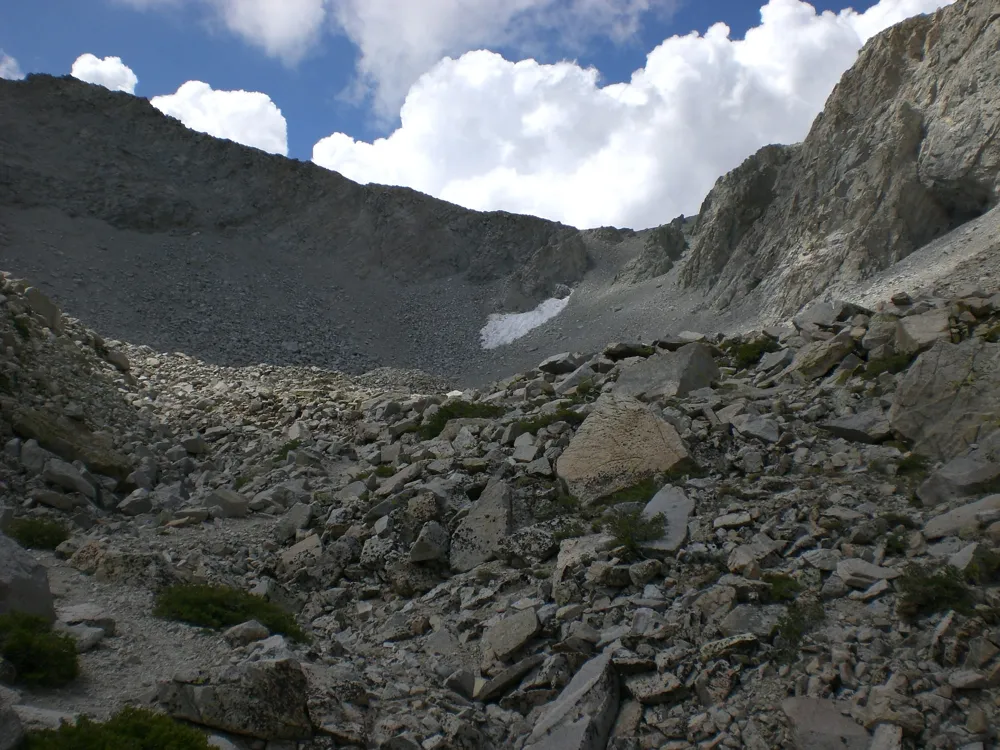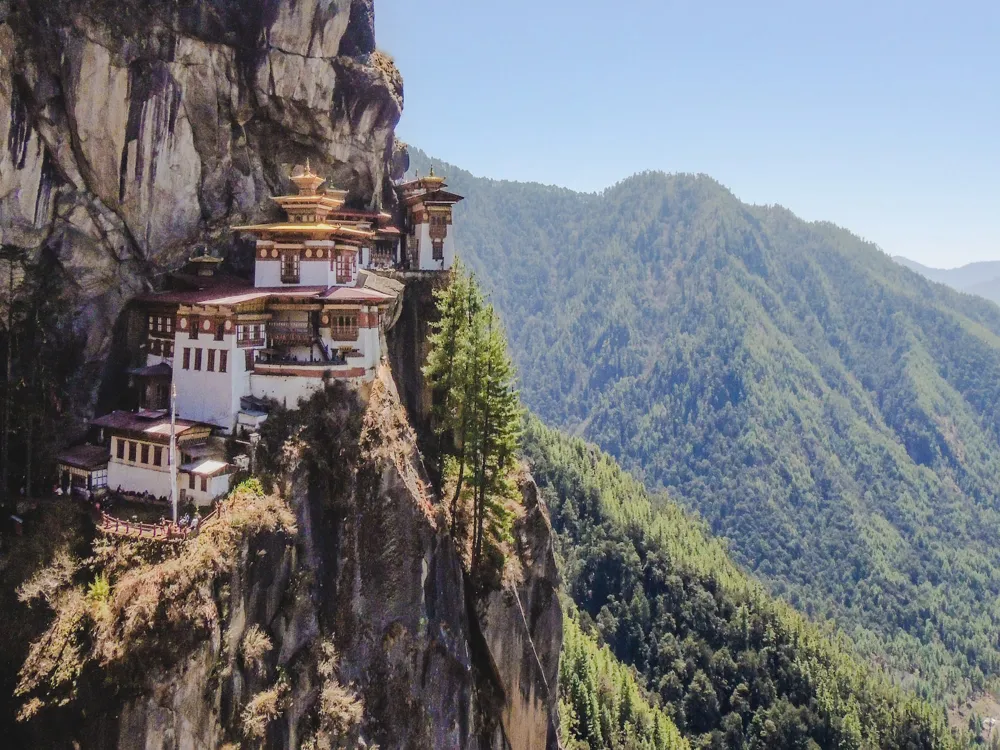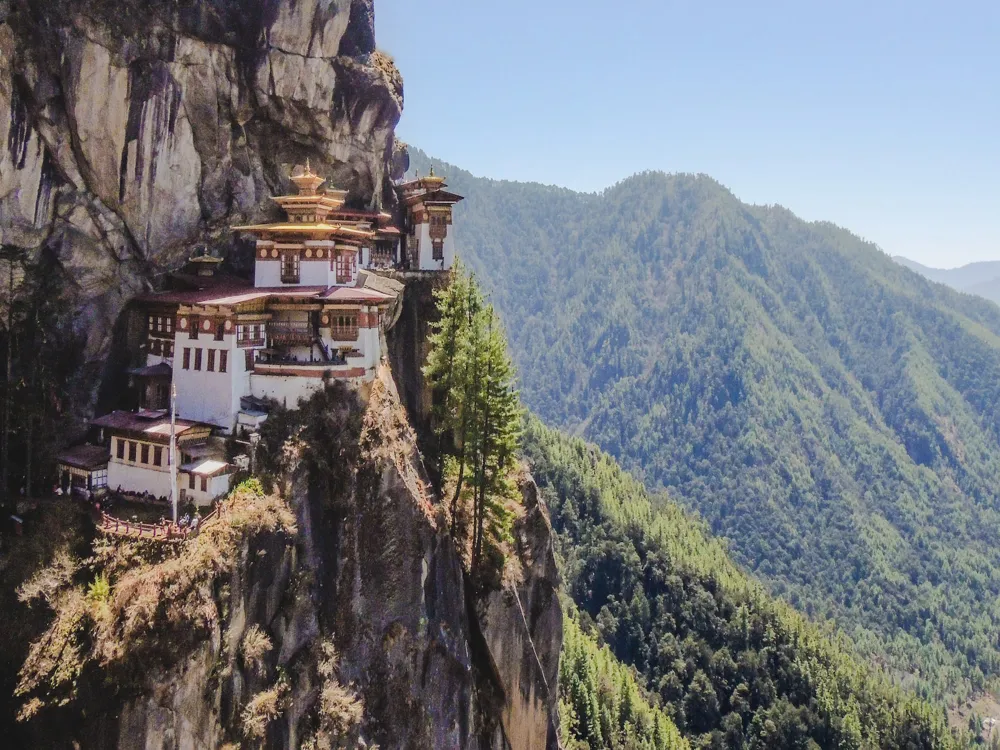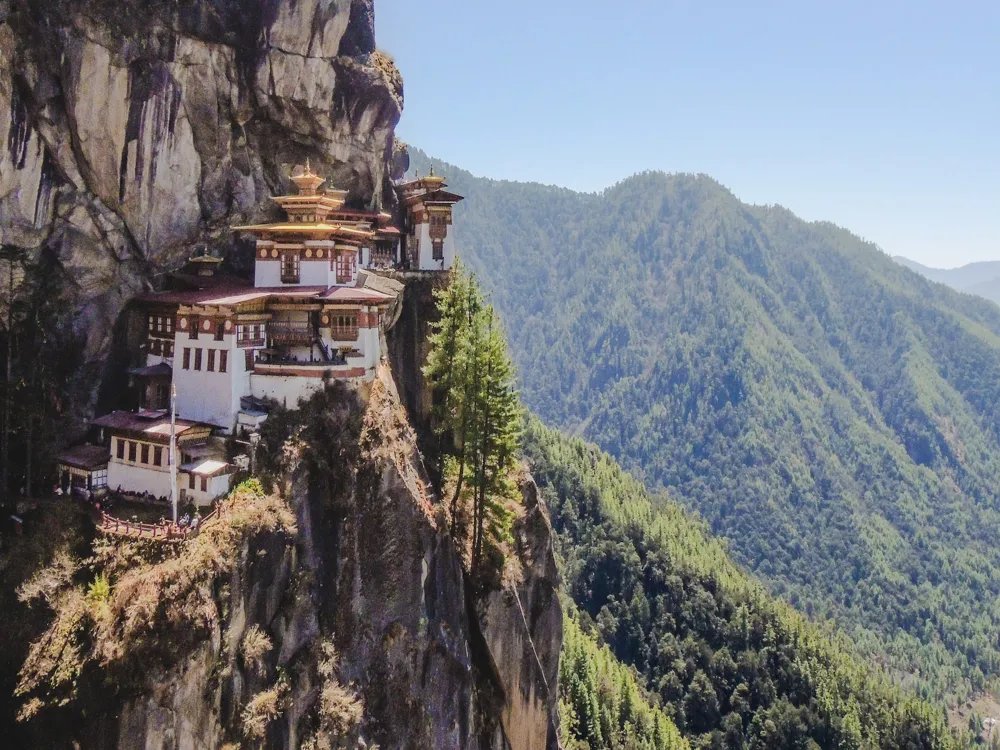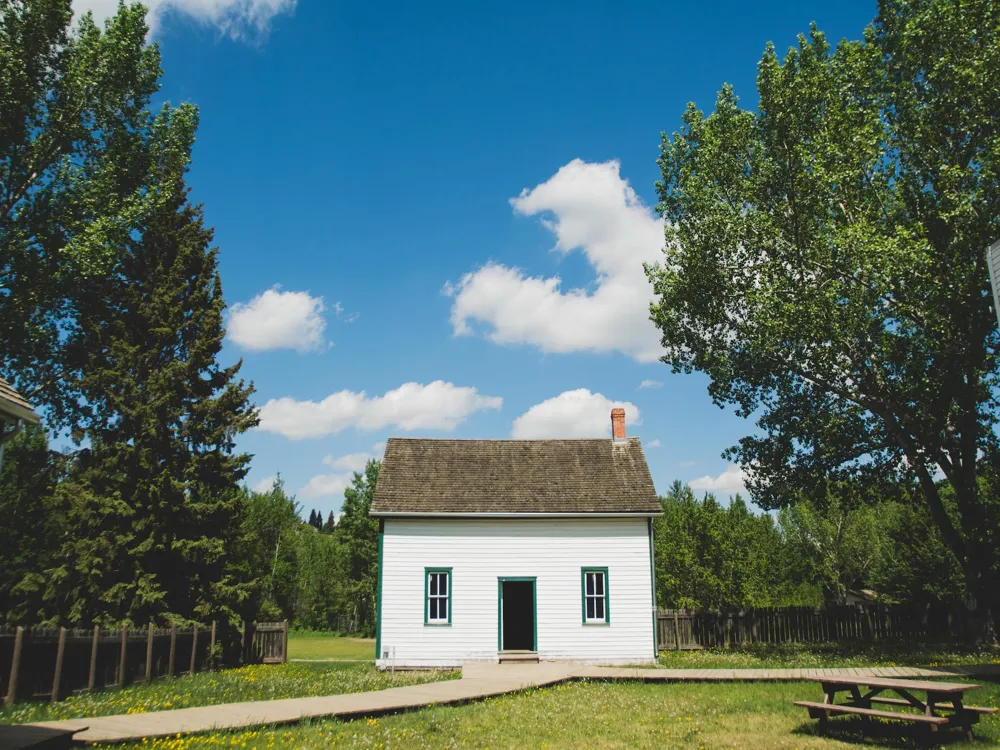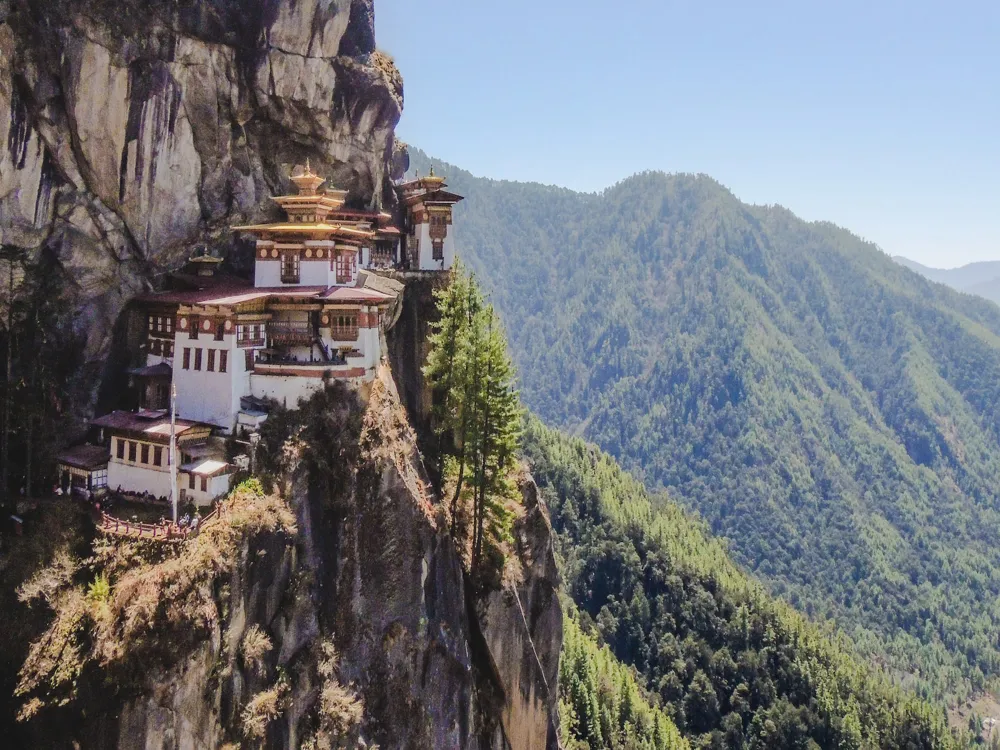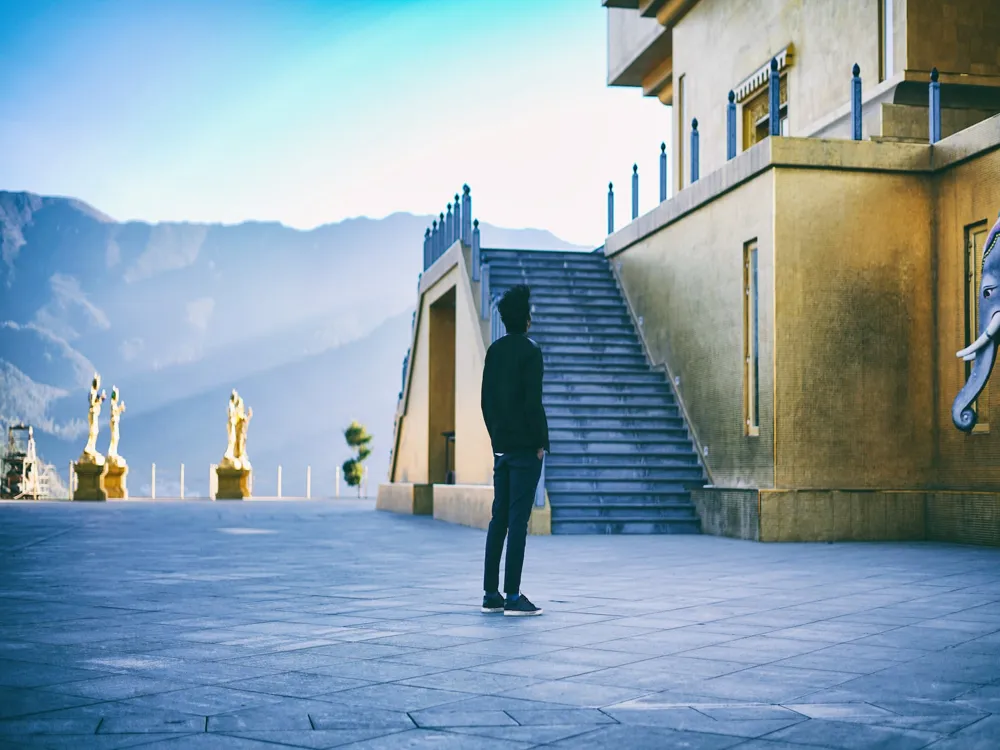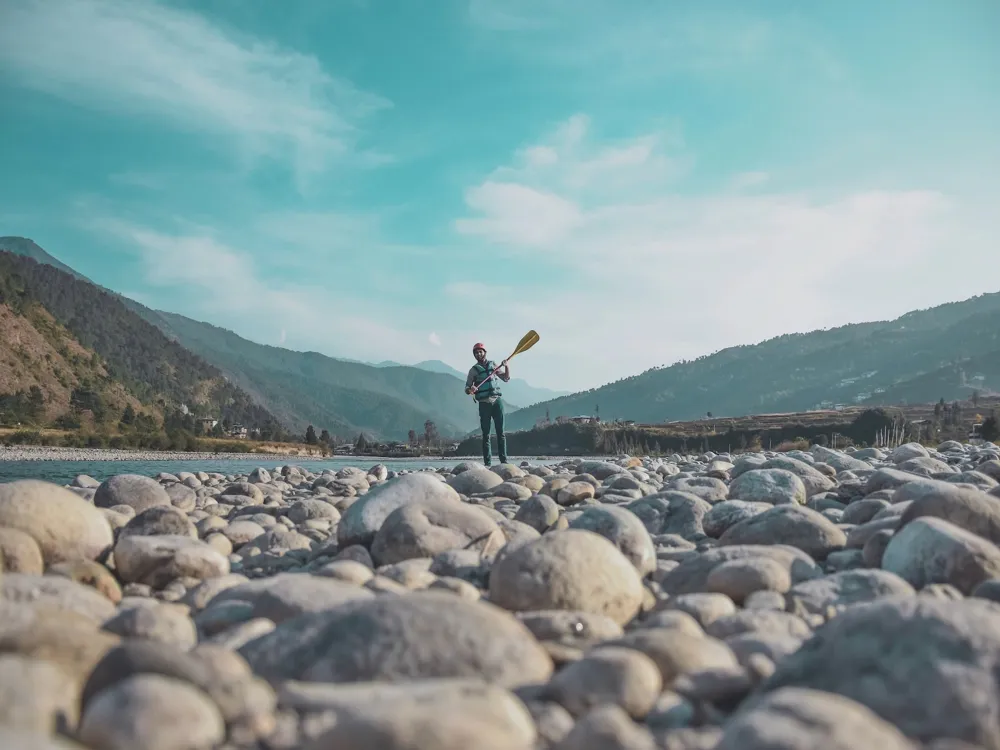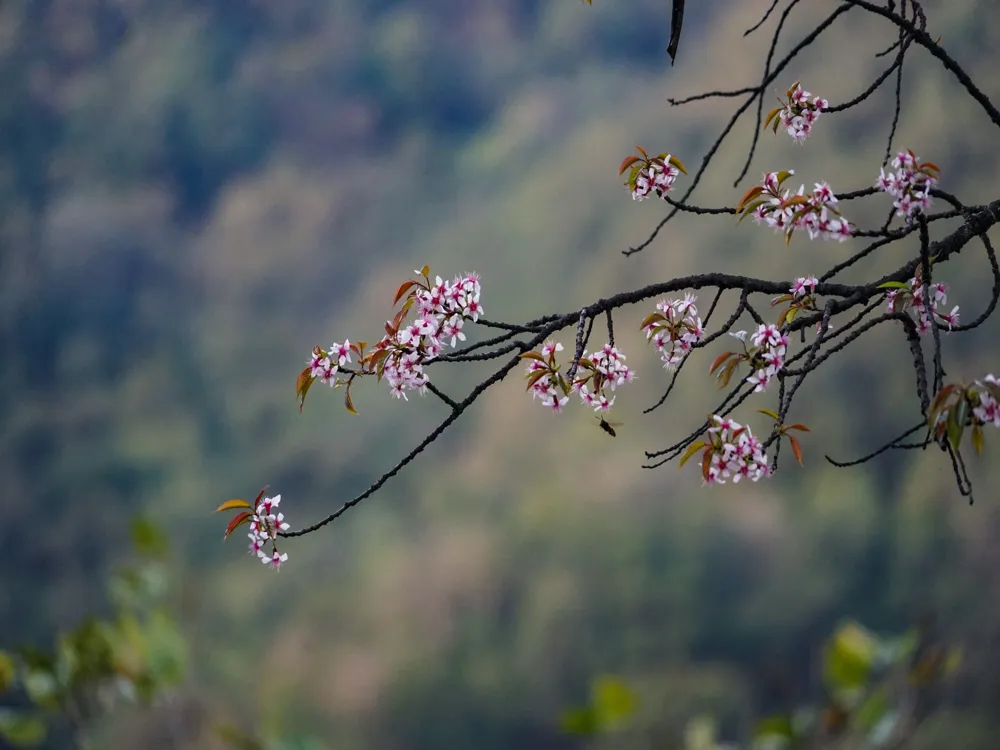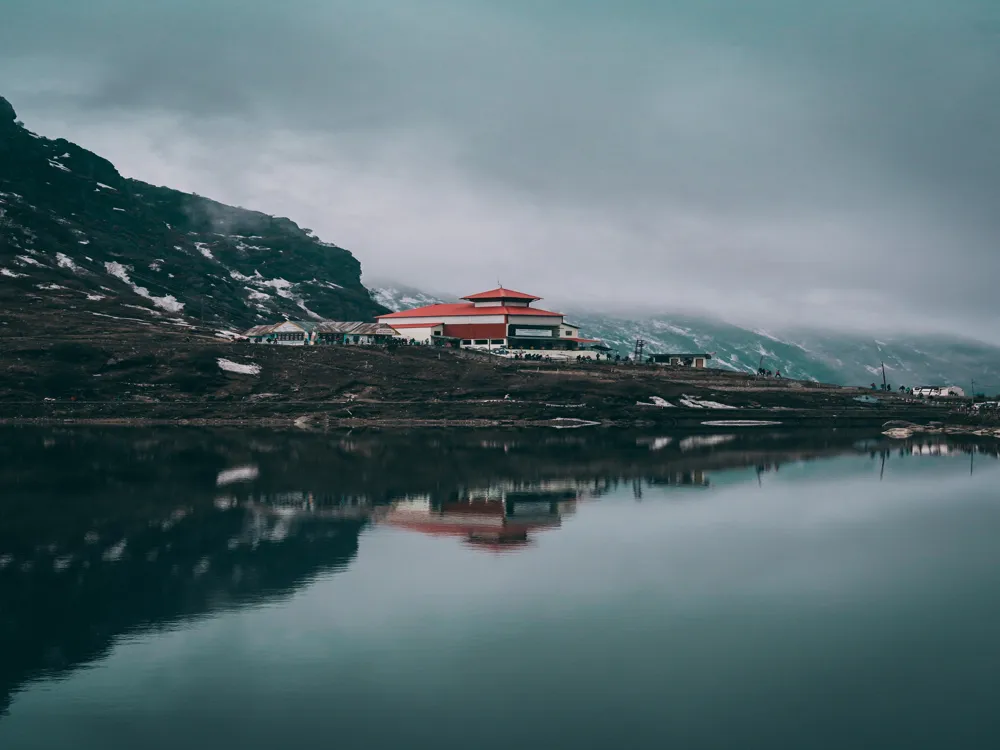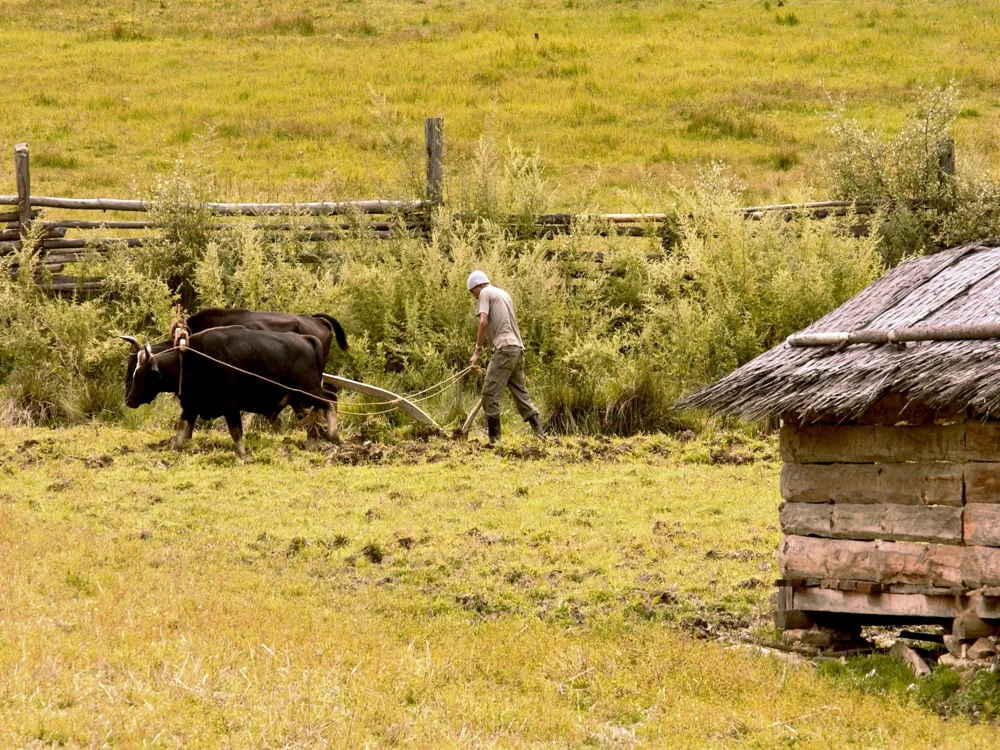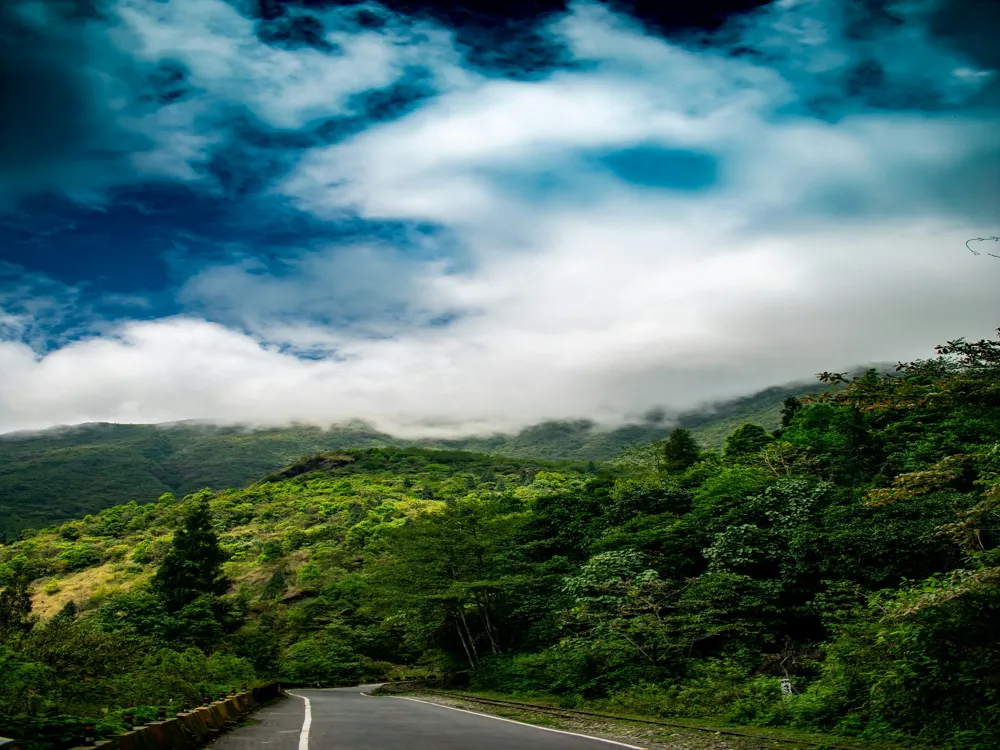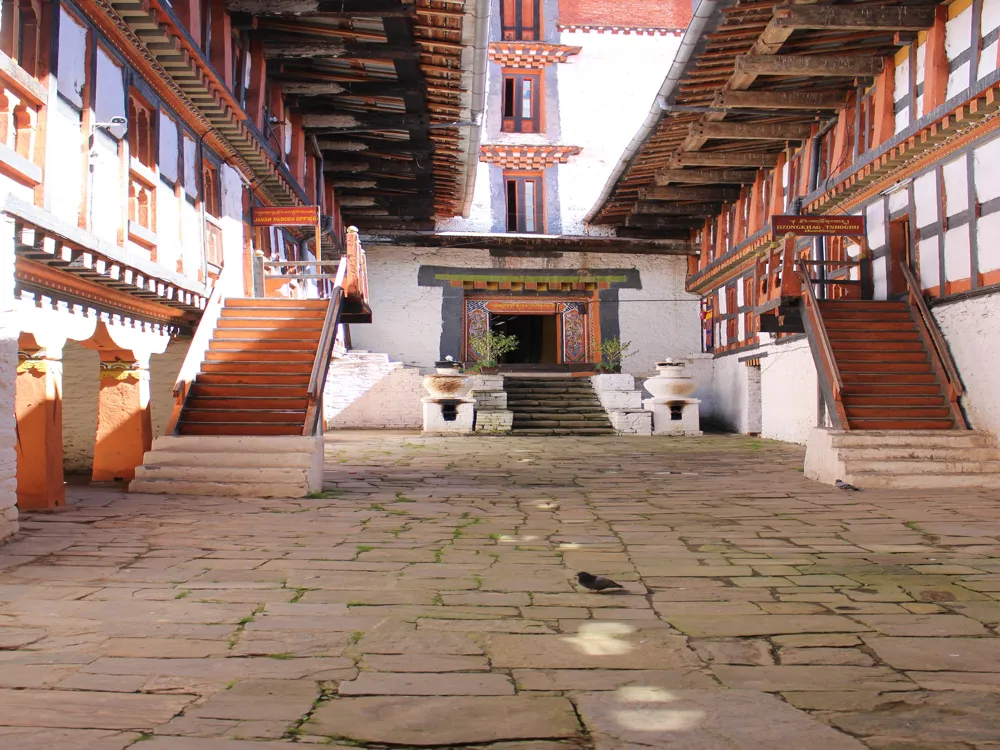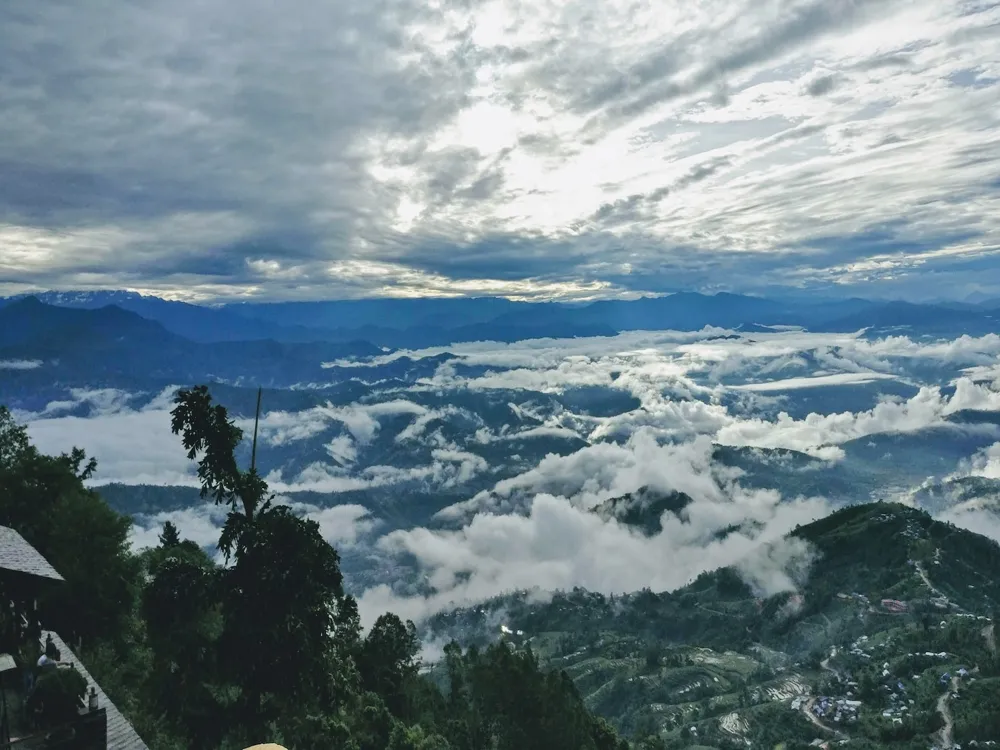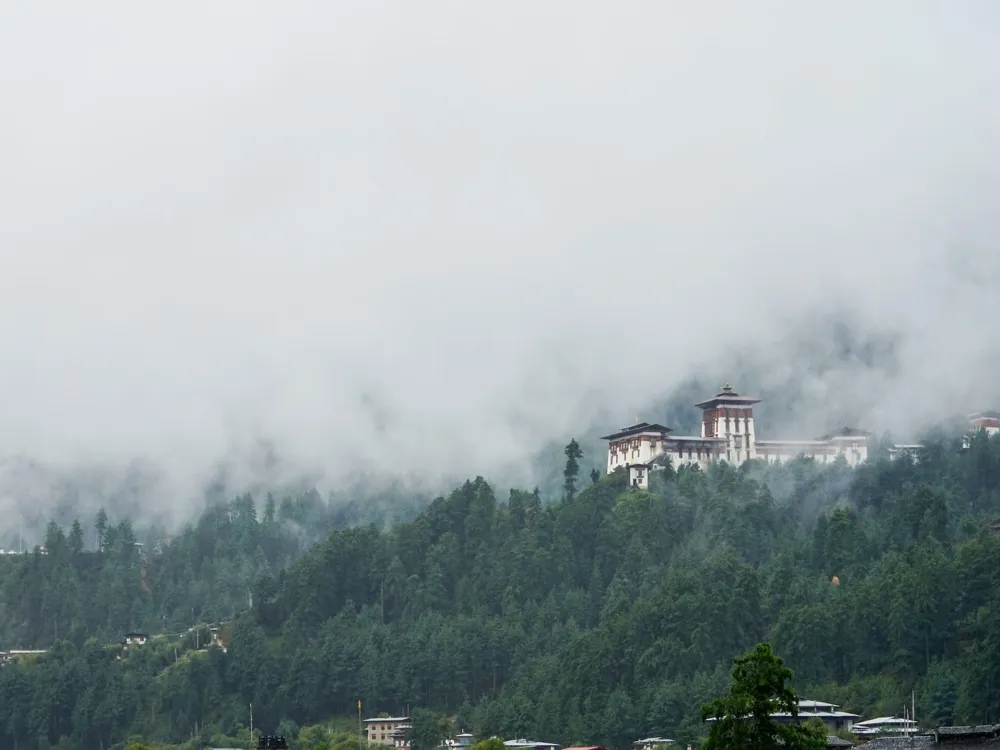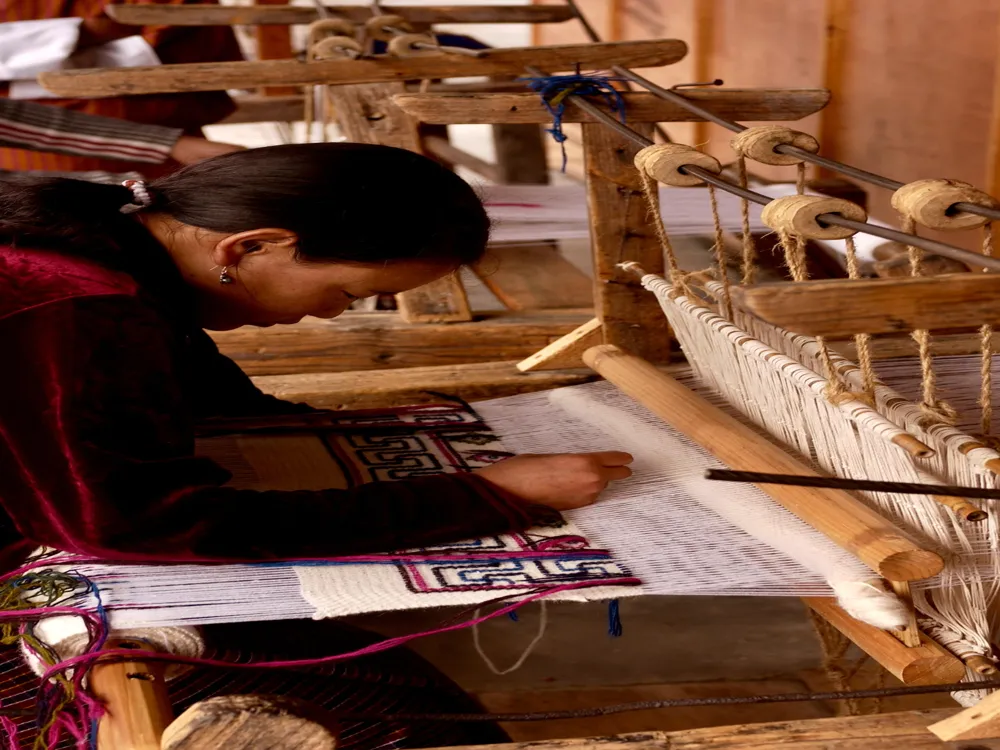Rinpung Dzong, a fortress of 'heaped jewels,' stands as an architectural marvel in the Paro district of Bhutan. Dating back to the 15th century, it's not only a testament to Bhutanese historical legacy but also an embodiment of the country's deep-rooted religious and cultural ethos. Originally built by Drung Drung Gyal, a Tibetan Lama, its initial purpose was to serve as a defense against Tibetan invasions. Over centuries, Rinpung Dzong has evolved, witnessing significant expansions and renovations under the direction of Ngawang Namgyal, the unifier of Bhutan. Today, it stands as a fine example of Bhutanese architecture, blending functionality with spiritual significance. The dzong's strategic location on a hill above the Paro River is no coincidence. It was deliberately chosen for its commanding view of the surrounding area, a feature crucial for its defensive role. Over time, it has transcended its martial origins to become a focal point of religious and secular activities in the region. The dzong houses both the monastic body and government offices, symbolizing the dual system of religious and secular governance characteristic of Bhutan. Visitors to Rinpung Dzong are often struck by its majestic structure, which is accentuated by its large central tower, or 'utse.' The whitewashed walls, traditional woodwork, and intricate paintings reveal stories of Buddhist mythology and Bhutanese history. The dzong's annual festival, Paro Tshechu, is one of the most significant in Bhutan, attracting tourists and locals alike who come to witness the colorful mask dances and religious rituals that are believed to bestow blessings and cleanse the soul. The interior of the dzong is equally fascinating, with numerous chapels and temples dedicated to various Buddhist deities. The most notable is the Kungarwa, housing a collection of sacred relics and texts. The intricate wood carvings, murals, and statues inside these temples reflect the skilled craftsmanship of the Bhutanese artisans and their devotion to spiritual artistry. Rinpung Dzong's significance extends beyond its physical structure. It stands as a symbol of Bhutanese resilience, spirituality, and the harmonious balance between nature and mankind. Its history narrates the tales of Bhutan's past, while its ongoing religious and cultural practices keep the spirit of Bhutanese tradition alive. The architecture of Rinpung Dzong Paro is a magnificent representation of Bhutanese tradition, blending religious significance with practicality. Characterized by massive buttressed walls that enclose a complex of courtyards, temples, offices, and living quarters for the monks, the dzong is an exemplary model of the unique architectural style of the region. The dzong's design is deeply symbolic, reflecting the Bhutanese belief in the interconnection between the physical and spiritual realms. The layout is carefully planned; each section has a specific purpose, whether it's administrative, religious, or residential. The main entrance of the dzong, traditionally known as the 'Khothang,' leads to a series of courtyards and central structures, each stepping up in sanctity and importance. The central tower, or Utse, is the most sacred part of the dzong. This towering structure is often several stories high, with temples located on the upper floors. The Utse is typically the most artistically decorated part of the dzong, featuring elaborate wood carvings, statues, and murals that depict various aspects of Buddhist lore. The craftsmanship evident in these artworks is a testament to the skill and spiritual devotion of Bhutanese artisans. The use of natural materials is a hallmark of Bhutanese architecture, and Rinpung Dzong is no exception. The walls are made of compacted earth and stones, while the roofs are constructed from wooden beams and shingles. These materials not only blend harmoniously with the natural environment but also provide the structure with the strength to withstand the region's seismic activity. The dzong's layout is designed to accommodate both its religious and administrative functions. The monastic quarters are usually located in the quieter sections, allowing monks to pursue their religious practices in peace. The administrative areas are more accessible, facilitating the day-to-day governance tasks. In summary, the architecture of Rinpung Dzong is a remarkable fusion of form and function, reflecting the spiritual, cultural, and practical aspects of Bhutanese life. Its design is not just about aesthetic appeal but also about creating a space that embodies the Bhutanese way of life, making it an invaluable piece of cultural heritage. Visitors should be mindful of the local customs and traditions. Dress modestly, remove shoes before entering temples, and refrain from touching sacred objects and murals. Photography inside temples is often prohibited, so always ask for permission first. The best time to visit Rinpung Dzong is during spring (March to May) or autumn (September to November). These months offer clear skies and pleasant weather, enhancing the experience of exploring the dzong. Consider taking a guided tour. Guides can provide in-depth information about the history, architecture, and cultural significance of the dzong, enriching your understanding and experience. If possible, plan your visit during the Paro Tshechu festival. This vibrant festival offers a unique opportunity to experience Bhutanese culture, with traditional dances, music, and costumes. Since the dzong is located at a high altitude, visitors should be aware of altitude sickness. Stay hydrated, acclimatize properly, and carry basic first aid. Also, the stairs and paths can be steep and uneven, so wear comfortable walking shoes. Rinpung Dzong is easily accessible from the town of Paro. Visitors can take a taxi or hire a car from Paro town, which is approximately a 10-minute drive to the dzong. For those who prefer walking, there is a scenic path from the town to the dzong, offering beautiful views of the Paro valley. This walk takes about 30 minutes and is an excellent way to soak in the natural beauty of Bhutan. Additionally, there are buses from major cities like Thimphu to Paro, from where you can access the dzong by local transport. The journey to Rinpung Dzong is not just about reaching a destination, but an immersion into the heart of Bhutan's cultural landscape. Read More:Overview of Rinpung Dzong Paro
Architecture of Rinpung Dzong Paro
Tips When Visiting Rinpung Dzong Paro
Respect Local Customs and Traditions
Best Time to Visit
Guided Tours
Attend Festivals
Health and Safety
How to Reach Rinpung Dzong Paro
Rinpung Dzong Paro
Paro
₹ 19,500 onwards
View paro Packages
Weather :
Tags : Buddhist Temple
Timings : 9:00 AM - 5:00 PM
Entry Fee : No Entry Fee
Planning a Trip? Ask Your Question
Also Refered As:
Paro Dzong
Paro Travel Packages
View All Packages For Paro
Top Hotel Collections for Paro

Private Pool

Luxury Hotels

5-Star Hotels

Pet Friendly
Top Hotels Near Paro
Other Top Ranking Places In Paro
View All Places To Visit In paro
View paro Packages
Weather :
Tags : Buddhist Temple
Timings : 9:00 AM - 5:00 PM
Entry Fee : No Entry Fee
Planning a Trip? Ask Your Question
Also Refered As:
Paro Dzong
Paro Travel Packages
View All Packages For Paro
Top Hotel Collections for Paro

Private Pool

Luxury Hotels

5-Star Hotels

Pet Friendly







